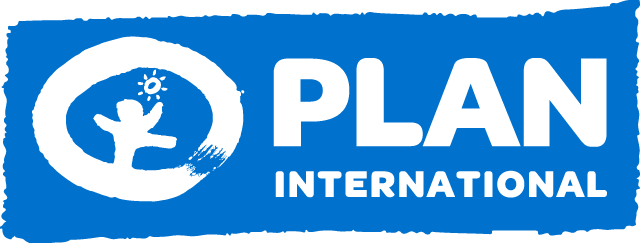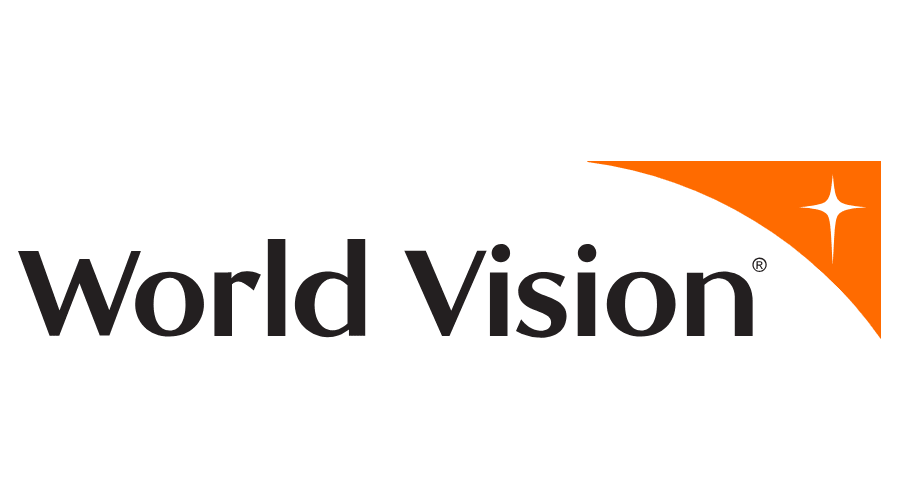Frequently Asked Questions
What is the Difference between Osteopathy, Chiropractic and Physiotherapy?
The differences exist in the philosophy that informs the treatments offered, the amount of training, and the type of treatments offered.
Osteopaths, and chiropractors, must study an Undergraduate degree and a Masters degree at a University, which takes a minimum of 5 years. A physiotherapist is required only to complete an UG degree for a total of 4 years.
All are required to be registered with AHPRA to practice in Australia.
Osteopathy was developed as a course of study and discipline in the 1870s.
Chiropractic came some decades later when an osteopathic student, DD Palmer, set up his own brand and industry.
Physiotherapy developed out of nursing practice in the 20th century. Great nurses, like the world famous Queensland nurse Sister Kenny, who famously treated polio victims, practiced the massage techniques that physiotherapy later adopted.
Osteopathy considers the body a single functional unit, and that dysfunction arises when arterial and venous and lymphatic supply of tissues is altered and general fluid flow, which supplies nutrients and clears away waste, is disrupted, causing congestion and tissue damage.
Chiropractic is historically based on the suggestion that impingement of the nerves as they exit the spine is the cause of 95% disease. The other 5% is caused by joint dysfunction in other areas of the body. This is called ‘subluxation’ and has been shown to be an inadequate and indeed incorrect explanation for illness. According to the theory, it is impossible for a body to be free of subluxation, so Chiropractic typically offers very short treatment sessions of up to 10 minutes, and all patients need regular and frequent treatments for life, that consist of very short sessions with quick manipulations of the spine.
Physiotherapy is mostly exercises and stretching. It is a purely musculoskeletal modality, not one that claims to manage constitutional dysfunction, and increasingly, is less hands-on. It instead prescribes contractile exercises as the main therapeutic intervention. Physiotherapy students are now graduating from their degree with minimal to no hands-on skills. It is now little different to Exercise Physiology.
All of this is fine if you need exercise to manage your injury, or your pain. But Osteopaths know that you should realign, de-torsion and decompress the structure before you subject it to more strain. This will make exercise more efficient and beneficial.
Having said that, there are great practitioners in all modalities, and there are some shockers. The great ones cherry pick and learn from their own profession and others. They don’t adhere to the absurdity of EBM which is always out of date and never relative to the individual; they instead listen to the patient before them, assess the patient, and treat accordingly.
You’ll know if they are good, because you’ll feel their authenticity, they’ll explain what is occurring, and the results will speak for themselves.
We are proud to be Osteopaths. We release tensions and myofascial spasm and congestion using hands-on techniques, such as specific manipulation, MET, counterstrain, joint mobilisation, stretching, inhibition, myofascial release. It takes more time for an Osteopath to treat a patient, as we need to listen, examine, identify and to address the unique problems of the unique body and person who is before us. You should have regular treatment to stay well, but not frequent. We are creating mobility throughout the body, not just the spine, and we are mobilising muscles, not just contracting them (when, after all, it’s pathological muscular contraction that causes most of our musculoskeletal problems) to create optimal function - alongside good nutrition and hydration, appropriate exercise and sufficient rest and recuperation.
Do i need a referrral to see my Osteopath?
No, anyone can make an appointment with an Osteopath. However, your general practitioner or specialist may recommend osteopathic treatment for certain conditions or problems. If you are unsure as to whether your specific complaint can be helped by Osteopathy, please call or email Central Sydney Osteopathy at [email protected]
Are Osteopaths ‘Doctors’?
In Australia, registered Osteopaths are legally permitted to use the title ‘Dr’ when the word Osteopath appears after the name of the practitioner. So I would be Dr Anne Cooper OAM RN DO MMedHum, Osteopath.
However many of us choose to not use the title, simply because it can be confusing for patients and other health professionals. It may suggest that we are medical doctors, or it may indicate that the Osteopath has a PhD (actually there are many osteopaths who hold PhD’s.)
It’s the right of any Osteopath to use the title ‘Dr’, but those of us who don’t are proud and grateful to be Osteopaths, and don’t want to contribute to any confusion.
Do you provide massage sessions for sports injuries?
Of course we do! You’ll also get advice on your gym practice or sports technique, as well as some supportive exercises and stretches.
What are the best areas to massage when I have back pain?
Low back pain is definitely related to strains of the lower limbs, starting at the feet and ankles and moving y upwards through the leg muscles, the joints of the pelvis and sacrum and into the low back and thoracic cage, even the shoulders. To resolve pain, and regain mobility, all these areas need to be massaged and mobilised.
What are the differences between massage types?
Remedial massage aims to relieve muscle aches and joint restriction, and is very anatomically based. You massage therapist will examine the area of pain and reduce tension in that place and all the anatomically connected areas.
Thai and Chinese massage are part of traditional medicine, using the knowledge gained over thousands of years of philosophy and practice. They both aim to reduce sickness and improve health. Of course they also relieve pain and tightness as part of their traditional medicine practice.
When is massage NOT safe?
If you are taking anti coagulants, have a tendency to develop blood clots, or have osteoporosis, or bone cancer, we need to know before the massage. Your therapist will adapt the treatment to suit and help you.
How long does a massage session take?
Massage at CSO is one hour long, but you can have longer, usually 90 minutes, if you can grab the last session of the day.
What public transport will get me to Central Sydney Osteopathy in the Inner West?
You Can Catch A Train To Petersham station, which is 80m north of CSO, or a bus along New Canterbury Rd , alighting at Audley Street, or the 445 Bus which will drop you right at the front of the clinic.
Is Osteopathy Safe? is it Effective?
In fact, Osteopathic care is immeasurably safer than driving in a car, riding a bike, walking in a park, flying in a plane, taking aspirin or NSAIDs, or just staying in bed.
The risk of injury from spinal manipulation is related to the upper cervical spine, with the head held backwards and rotated as far as possible … like in the movies. It doesn’t happen that way in real life and certainly not ever in our clinic. In the rare instance that the upper cervical spine needs to be manipulated, ( and there are plenty of ways to release tension there without manipulation) a ‘provocation’ test is performed, and if negative – that is, it doesn’t provoke any strange symptoms or signs – the manipulation is performed with the head held forward, side bent and rotated only minimally. There is no strain on the vertebral arteries when the practitioner uses this positioning.
The other extremely rare risk attributed, incorrectly, to manual therapy is dissection of the arteries of the neck. This is a pathology that begins to develop days or weeks before the patient develops a one sided sore neck and headache … and so visits the osteopath, chiropractor, physiotherapist, massage therapist or GP. However the dissection is undetectable without specialist scanning, and the process is already in train. The hapless practitioner can get the blame for a process that had started days before and is otherwise undetectable.
Of course, practitioners or a therapeutic approach can be deemed dangerous because of what is NOT done - danger by neglect. We might miss something. You can be assured that our practitioners have had a comprehensive and extremely detailed medical education, with particular emphasis on the screening and diagnosis of the kinds of injuries and illnesses likely to turn up to a musculoskeletal clinic. All our patients have a comprehensive history taken, all have a clinical examination. We do not ever vacillate or hesitate to refer to a different modality or a GP or Emergency should that be necessary.
What are the tenets of Osteopathic Medicine?
Osteopathic medicine is based on the following principles. These direct the osteopathic diagnosis and treatment.
- The body is a co-ordinated unit, with contiguous tissues intimately related to and influencing each other.
- The structure and function of the body are reciprocally inter-related.
- The body has the inherent capacity to regulate, defend and repair itself.
- When the normal adaptability is disrupted, or when environmental changes overcome the body’s capacity for self-maintenance, dysfunction or disease may develop.
- Tissue and organs which receive optimal nutrition, blood supply and drainage are more able to function well.
- There are musculoskeletal components to disease that are not only part of the disease, but also contribute to the continuance of the disease.
- Logical treatment of disease should consider these principles.
Add to that a good, complete diet of real food, regular physical activity and no deleterious addictions, and you'll have an optimal level of well being specifically and uniquely yours.
Are Osteopathy and Chiropractic Safe? Are they Effective?
Are Osteopathy and Chiropractic safe? In fact, Osteopathy and Chiropractic care are immeasurably safer that driving in a car, riding a bike, walking in a park, flying in a plane, staying in bed or taking an aspirin.
The risk of injury from spinal manipulation is related to the upper cervical spine, with the head held backwards and rotated as far as is possible… like in the movies. It doesn’t happen that way in real life and certainly not in our clinic. In the rare instance that the upper cervical spine needs to be manipulated, a ‘provocation’ test is performed, and if negative – that is, it doesn’t provoke any strange symptoms or signs – the manipulation is performed with the head held forward and rotated only minimally. There is no strain on the vertebral arteries when the practitioner uses this positioning.
The other extremely rare risk attributed, often incorrectly, to manual therapy is dissection of the arteries of the neck. This is a pathology that begins to develop days or weeks before the patient develops a one sided sore neck and headache… and so visits the osteopath, chiropractor, physiotherapist, massage therapist or GP. However the dissection is undetectable without specialist scanning, and the process is already in train. The hapless practitioner can get the blame for a process that had started days before and is otherwise undetectable.
Of course, practitioners or a therapeutic approach can be deemed dangerous because of what is NOT done - danger by neglect. We might miss something. You can be assured that our practitioners have had a comprehensive and extremely detailed medical education, with particular emphasis on the screening and diagnosis of the kinds of injuries and illnesses likely to turn up to a musculoskeletal clinic. All our patients have a comprehensive history taken, all have a clinical examination. We do not ever vacillate or hesitate to refer to a different modality or a medical doctor should that be necessary.
More information is available in our NEWS section of this website where the American Heart Association and America
Does Osteopathy Work With Modern Medicine?
Modern scientific medicine and Osteopathy work well together. At Central Sydney Osteopathy we embrace all medical care - surgery, rehabilitation, antibiotics and other pharmaceuticals, public health initiatives, radiology, and immunisation, when these interventions are required and appropriate. There is no such thing as alternative, or complementary, or orthodox, medicine - there is only effective medicine and ineffective medicine. As responsible practitioners we will always refer you for care to other effective modalities, when required. Unfortunately, Osteopathy and other allied health modalities do not receive public funding of research through the NHMRC, such as that offered to medicine, so very little high quality research is done into these cost effective (and low profit) modalities. In Britain however, research has seen Osteopathy included in the NHS and in Australia, under Medicare, since it has been found to be effective in the management of pain.
But we suggest you ask around to see what our patients say about the results of their treatment at CSO.
How will I feel after the treatment?
Because your osteopath is diagnosing and correcting mechanical imbalance and restriction, after a treatment you will usually feel more energetic, balanced and mobile. If yours is a chronic or acutely inflamed problem, the massage and mobilisation may well cause some post treatment soreness, which usually passes in a couple of days. You may find that after treatment you feel inexplicably lighter, and are able to sleep well and wake refreshed for the first time in a long while. This is indicative of reduced mechanical strain throughout your structure. Quality of sleep is a great indicator of both your need for osteopathic therapy and your response to it.
How long will my consultation take?
All sessions at CSO are 40 – 60 minutes long of face-to-face treatment.
How many sessions will I need?
Depending on the severity of your pain, we expect to see you initially for up to 4 - 6 sessions in the first month, and then on a maintenance regime, as we have come to understand that you should see an osteopath every 4 to 6 weeks to maintain optimal mobility. People on a monthly treatment regime report that they feel fabulous and are able to avoid the acute episodes ... unless they do something really silly like trying to lift a piano.
How much does it cost?
The consultation fee for Osteopathy ranges from $140 for a 40 minute consultation. We do not charge a higher fee for initial consultations. The fee for remedial massage is $120 for 60 minutes and $165 for 90 minutes.
We cost less than other Sydney clinics because we maintain a commitment to be affordable and accessible. Seriously.
HICAPS allows you to make your private health claim on the spot to reduce your outlay. All of our practitioners have provider numbers to allow you to claim for their modality, but please check under the practitioner profiles to be sure you can claim on your insurance for the practitioner of your choice.
If yours is a long term, persistent complaint, you can ask your GP to refer you to one of the Osteopaths for care under the Chronic Disease Management scheme, which subsidises up to five sessions a year with an osteopath.
If you are making a claim under Workers' Compensation or Third Party insurance, you will need to have a Claim number and written approval for our care from your insurer before we can attend to you.
As a general rule, we do not offer discounts for our services.
Is Treatment Covered By Private Health Insurance, Medicare, DVA, Work Cover And The Motor Accident Authority?
Osteopathy, chiropractic, acupuncture & TCM, and remedial massage are all covered by private health insurance, claimable through HICAPS. Osteopaths, chiropractors and TCM practitioners are Government registered and so are also claimable through the Motor Accident Authority (3rd Party), DVA, WorkCover and under the Medicare Chronic Disease Management plan. See your GP for advice and referrals for each of these.
What if I am in a remote area or unable to access care?
We help many people from remote and rural areas, even internationally, who are unable to access effective care. If we can advise or help you, do contact us and we speak with you or send on information and information sheets, free of charge, and maybe refer you to a trusted colleague or modality closer to you.
Check out the information sheets and videos on this website for remedial care advice.
Does CSO have any links with other health care providers or clinics?
CSO has no financial links with any other clinics, and all our referrals are made only on a needs basis. We receive no remuneration for our referrals. But there are many clinics run by great osteopaths who developed their skills while working at CSO. We keep close contact with those Osteopaths, who are all over Australia, as well as in NZ and the UK.






